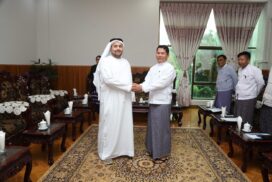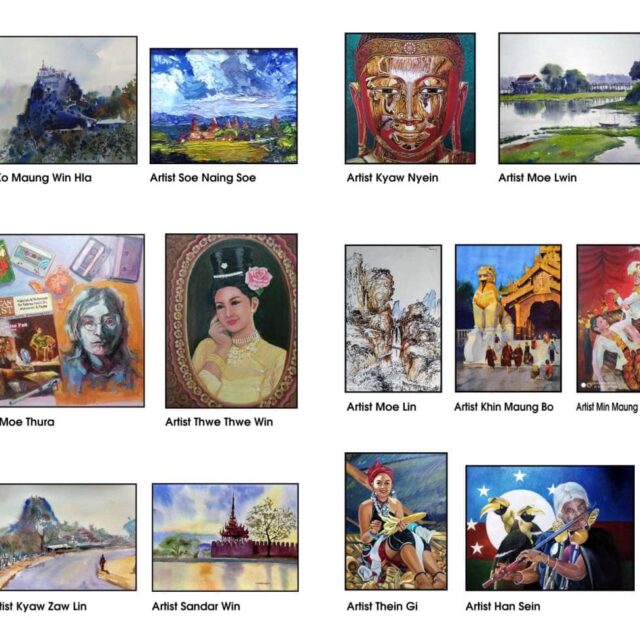The Directorate of Hotels and Tourism has introduced seven destinations to local and foreign travellers visiting the Bagan World Heritage Site.
These destinations include Kyaukmyathmaw in the Bagan Ancient Cultural Zone, a 900-year-old tamarind tree in ZeeOHla Village, a 21-acre Sal plantation dating back to the Bagan era and currently conserved by the Forest Department, the Yokesone Monastery in Thelpyintaw Village, Gelmoe Pond in Legwa-Letpan-aing Village of Kyaukpadaung Township, Mount Popa trekking 11 miles northeast of Kyaukpadaung Township, and Set-Set-Yo Village in Ngathayauk of NyaungU Township, where residents still don the traditional Youngpaysu hairstyle.
Among these destinations, Set-Set-Yo is arguably the most famous, known for its residents who traditionally adorn Youngpaysu (Sanyitwine), a top-knot with a circular fringe.
How to get there?
Set-Set-Yo Village is located five miles south of Ngathayauk in NyaungU District.
Local and foreign visitors from Yangon can visit the village through Janhlee Village, five miles and four furlongs north of the NyaungU-Popa Byatta Panset Road. Once you see the signboard “Set-Set-Yo,” make a turn and follow the lane for 20 minutes to reach your destination.
Travellers from Mandalay can access the village via the NyaungU or Kyaukpadaung-NyaungU road (nine-mile long) or six miles from Ngathayauk in NyaungU District, or Bagan-NyaungU road (nine miles long).
Why Set-Set-Yo?
The village’s name, Set-Set-Yo, means “drip-drop” in Myanmar. The village earned this name from a legend involving a couple from Ngathayauk Village. The child they had was named “Maung Cha Tet”, which translates to “the boy crawled upon by termites”. According to the legend, the child grew up to become Tabinshwehti, the founding king of the Toungoo Empire.
The village is renowned for its unique Youngpaysu hairstyle, worn by residents for hundreds of years. This hairstyle is a custodian of Myanmar’s rich cultural legacy, preserving not just a tradition but also a distinct identity. The village monks and government bodies have played crucial roles in preserving this cultural heritage.
Set-Set-Yo has become a popular destination for foreign visitors, especially those interested in observing the traditional Sanyitwine hairstyle. The village-based tourism began in 2017, attracting global travellers who appreciate not only the ancient temples and pagodas in Bagan but also the unique cultural heritage represented by the Youngpaysu hairstyle.
Why do foreigners love it?
Set-Set-Yo Village Administrator U Aung Naing mentioned that during the previous year’s peak season, visitors from Russia and Australia, among others, were particularly interested in the traditional Sanyitwine hairstyle. Their interpreters conveyed that witnessing this traditional hairstyle deepened their love and interest in Myanmar. The village received more local visitors during the current year, and the residents are grateful for the legacy passed down from their village monks. The Youngpaysu hairstyle has brought many visitors, along with development and transportation infrastructure. The villagers express their commitment to preserving this hairstyle.
Currently, 55 villagers aged between five and 13 years, and 43 adults don the Youngpaysu hairstyle. Whether tangible or intangible, cultural heritage will disappear if not preserved. The Youngpaysu hairstyle, serving as a tourist attraction, needs protection to pass down to future generations.
Welcome to Set-Set-Yo
Set-Set-Yo is blessed with Bagan-esque charms, adorned with an array of arid flora, including palm, tamarind, neem, acacia, lebbek, and cactus. These trees contribute to keeping the village cool during mornings and evenings in the winter, adding to the landmark beauty of upper Myanmar.
Farming thrives in Set-Set-Yo and surrounding villages, with the cultivation of peanuts, sesame, and pigeon peas. Additionally, some villagers earn their livelihoods through production, growing wood-apple fruits and plums, and making preserved soya bean.
Upgrading the rocky six-mile stretch between the village and the Byatta Panset Road into an asphalt road has facilitated year-round access to the village for both local and foreign travellers. — Nyein Thu(MNA)/NT

















